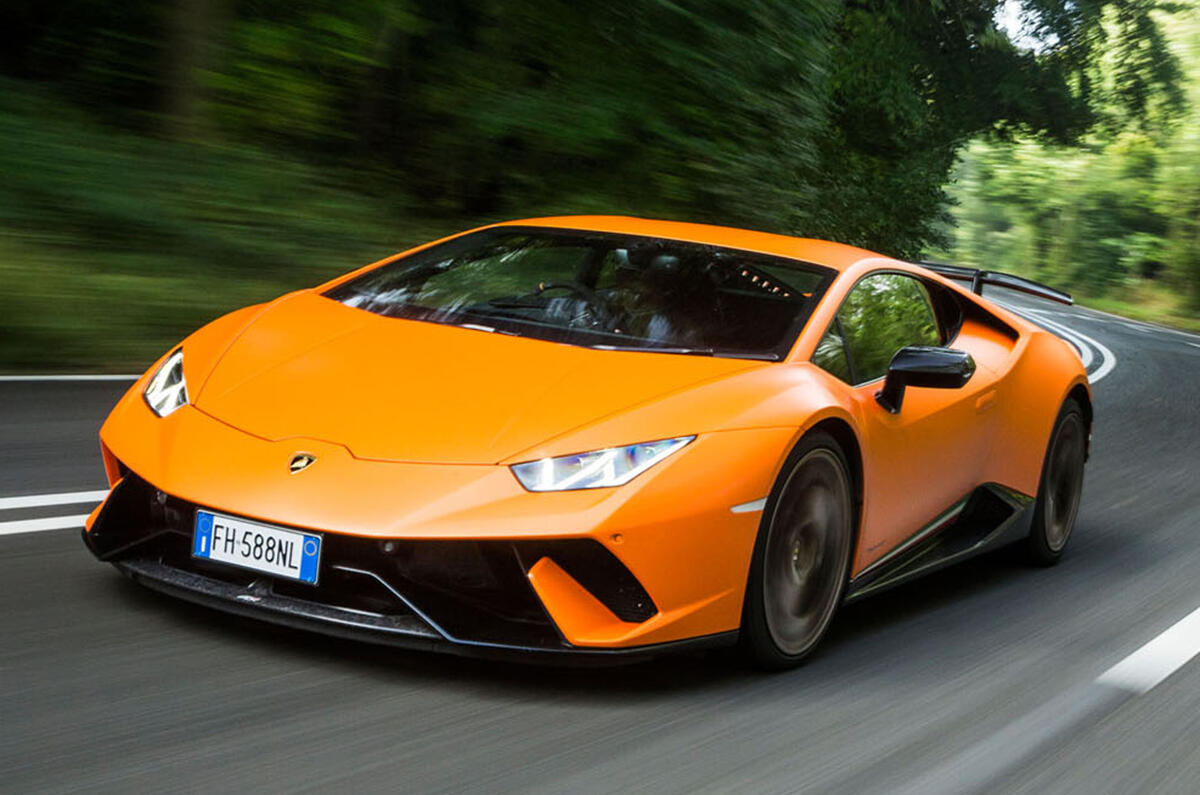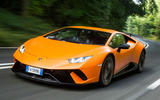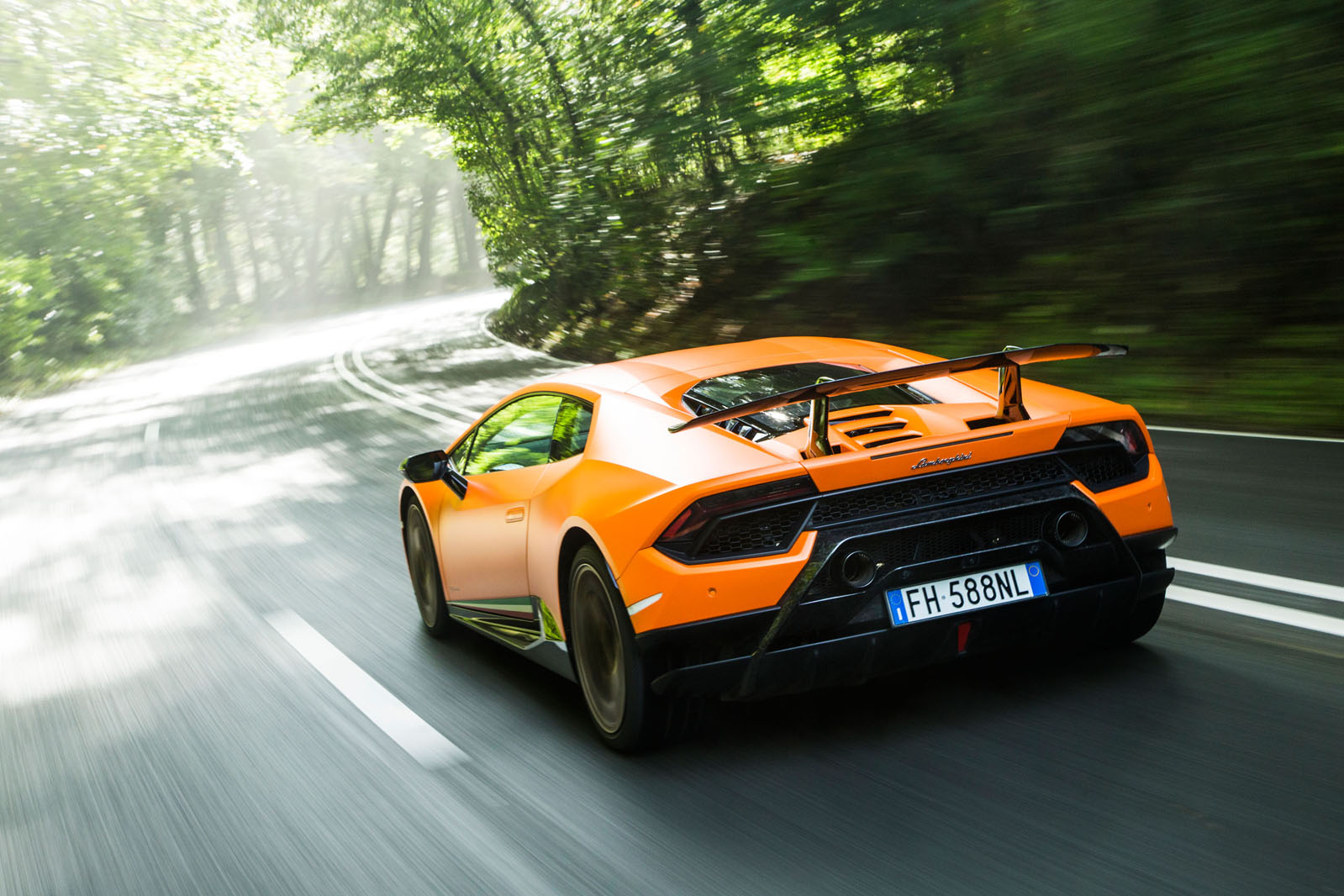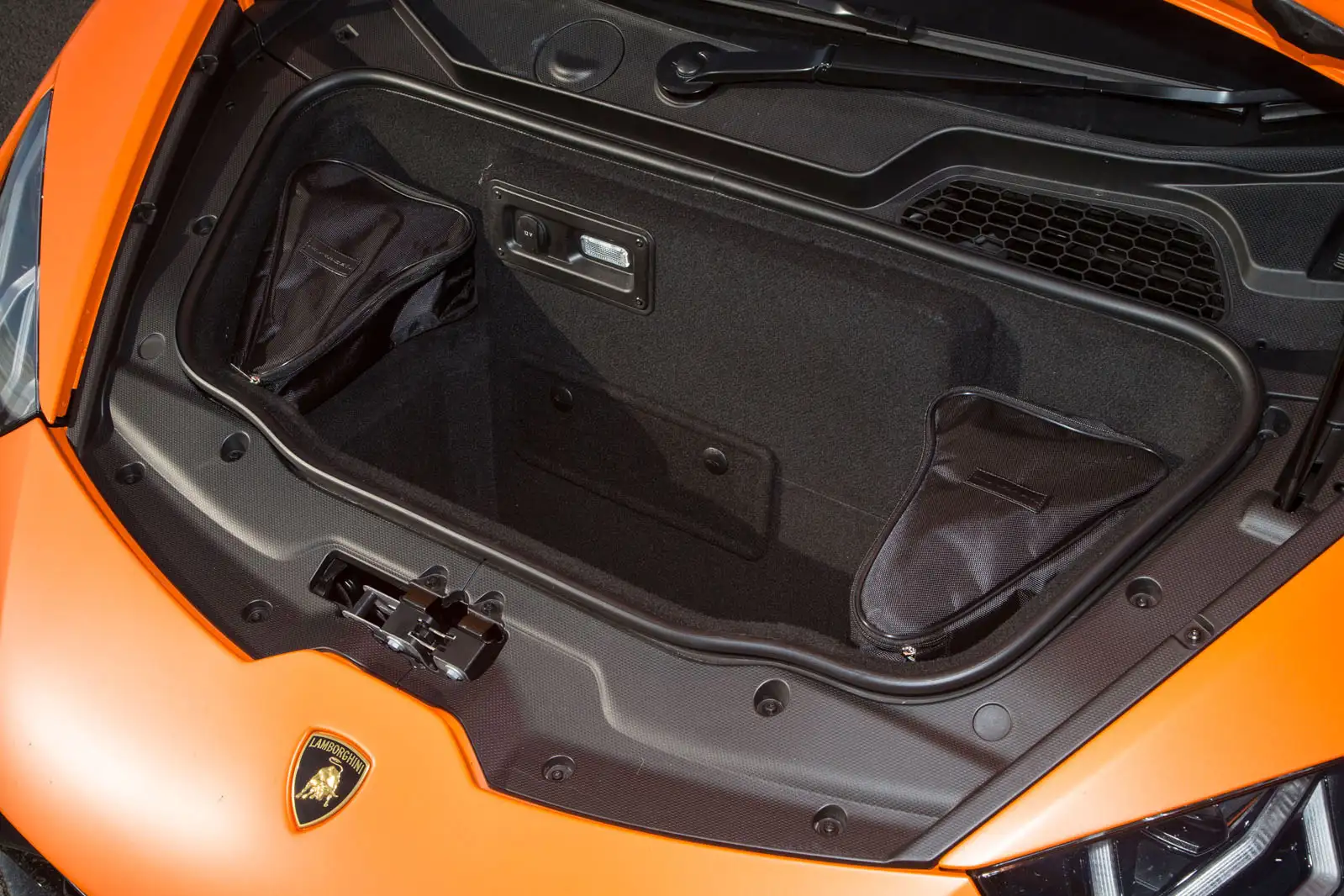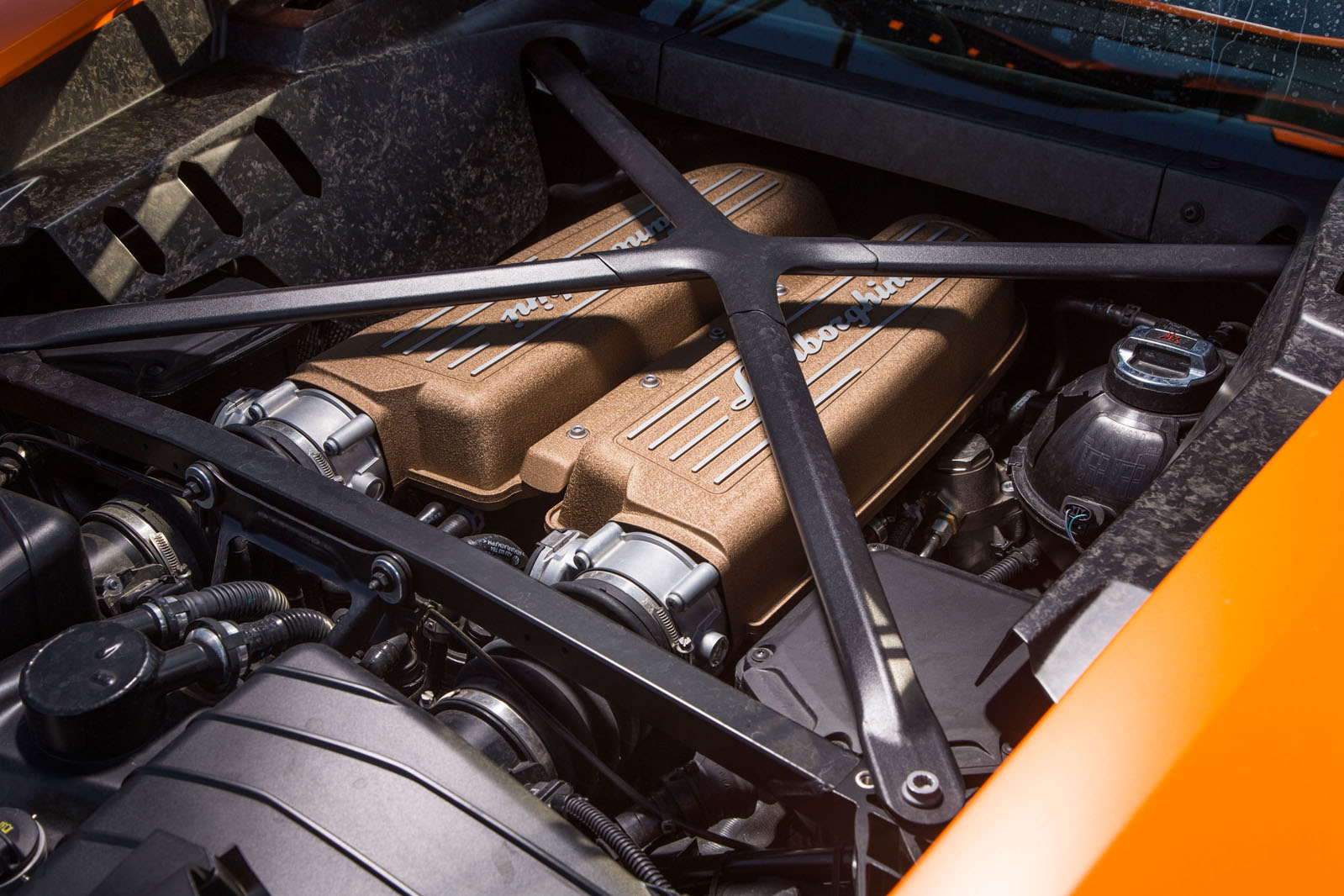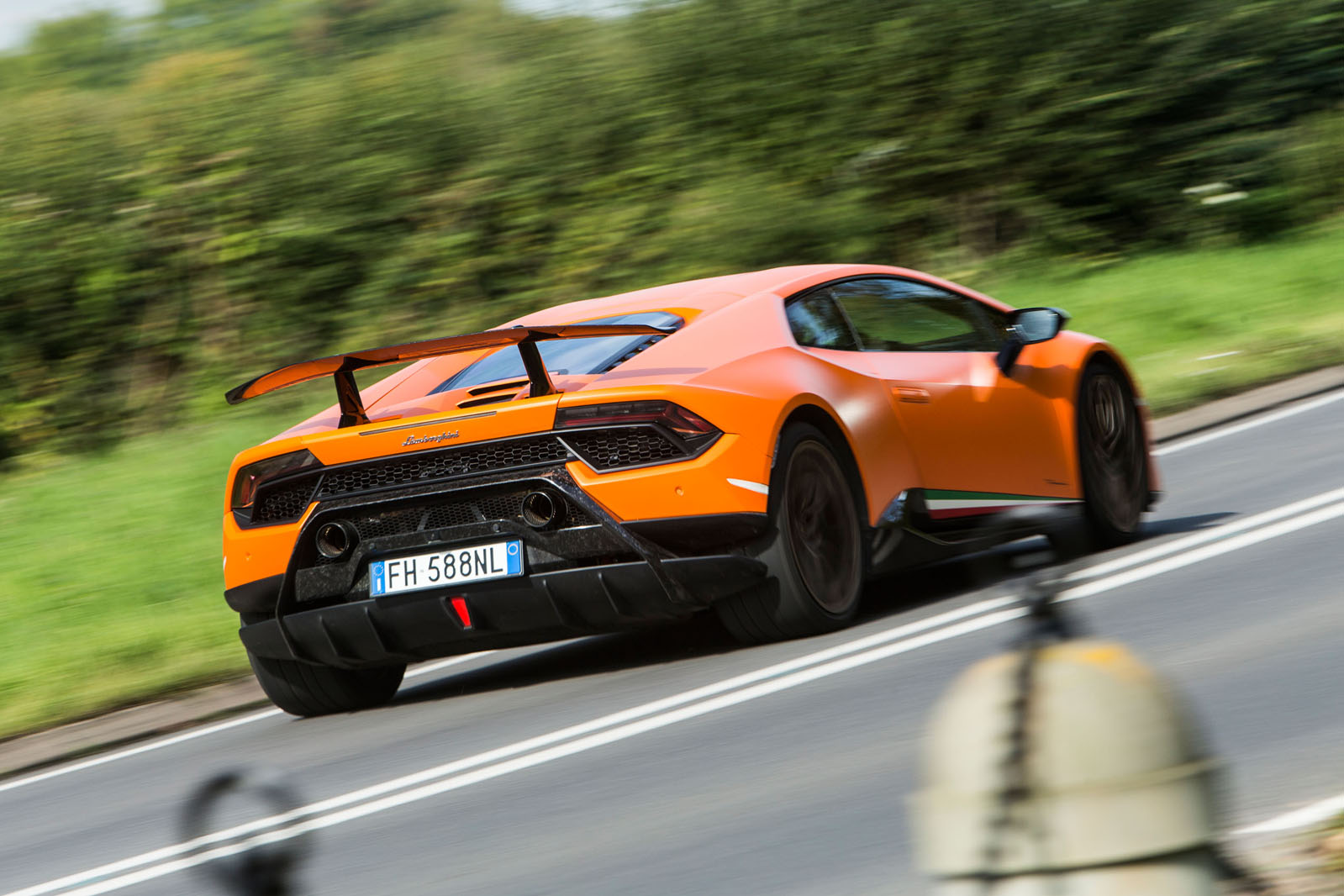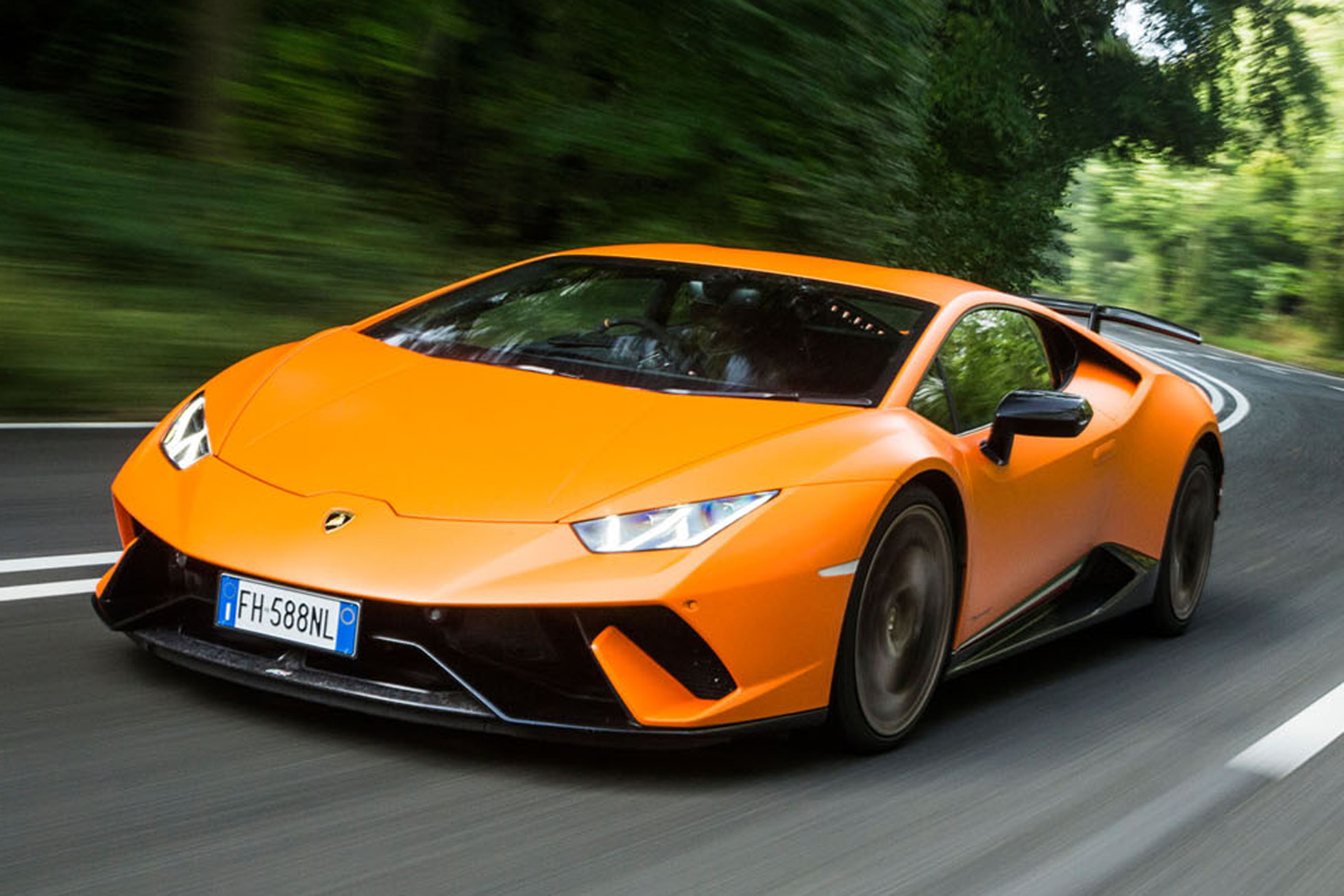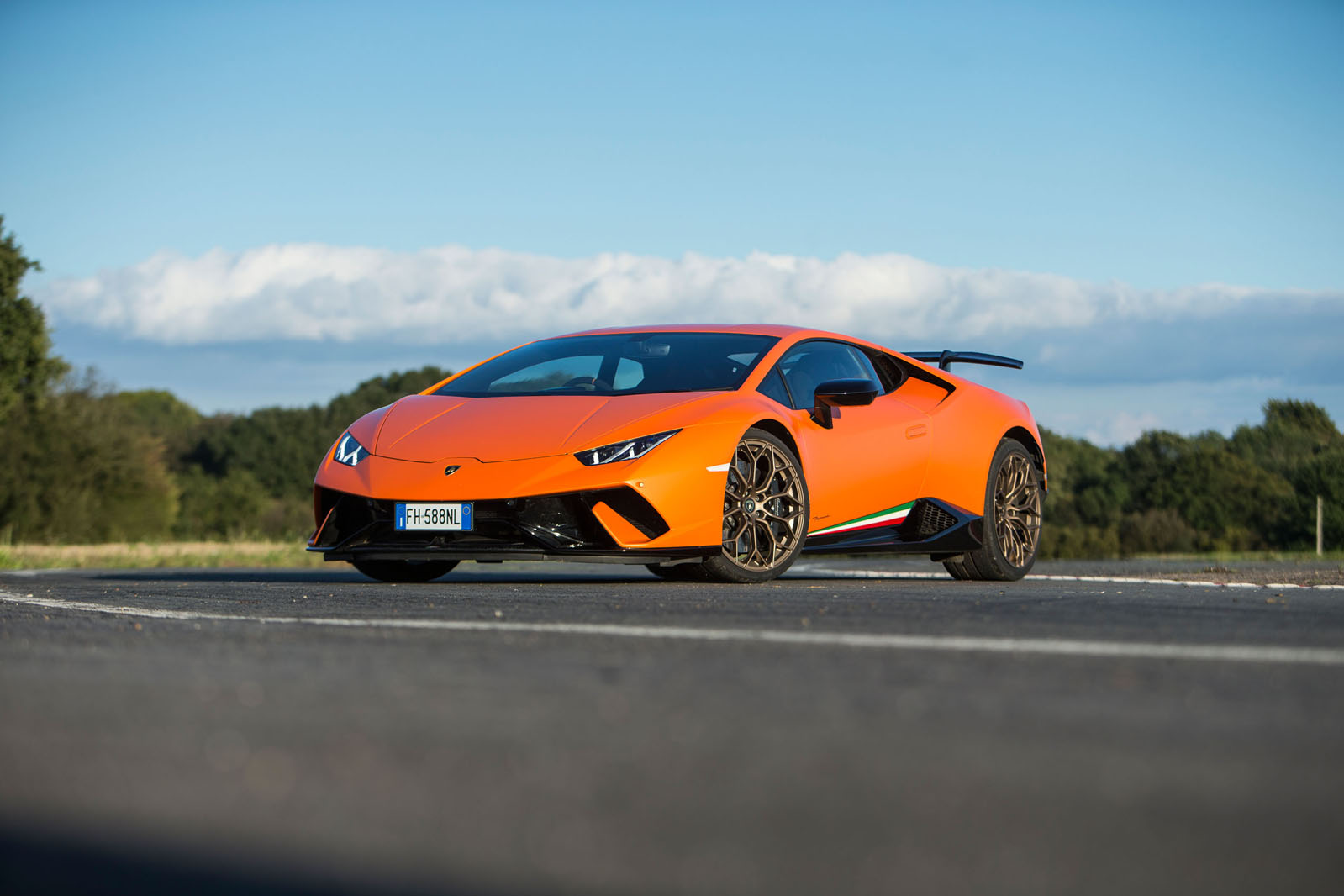The cockpit of a Huracán is a feast for the senses.
In the Performante’s case, that feast comes with a liberal topping of tactile Alcantara and Lamborghini’s ‘forged composite’ carbonfibre resin.
Forged composite is pretty much everywhere you might find plain plastic in the standard Huracán: it’s what the interior door handles, air vents and much of the centre console mouldings are made of. As is evident on the outside of the car, it’s a deliciously attractive material just to admire.
From a functional standpoint, the Huracán’s cabin has its flaws, ranging from slightly annoying to the more serious, but to consider many of them in isolation would be to ignore what they contribute to the greater part of the car’s appeal: the way it looks.
Sure, there’s a limited amount of head room and the steeply raked windscreen cuts into forward visibility. But accepting both foibles means you get to drive something that looks about as arresting as a modern fighter jet.
The Performante’s standard seats feel a bit pudgy and high mounted, but if you specify Lamborghini’s optional fixed-back bucket-style seats (as fitted to the left-hand-drive example that we performance tested, rather than the one we photographed), you get a lower seating position and just enough head room for an average-height driver wearing a crash helmet.
With the standard seats, reclining the backrest to its maximum angle when the cushion is simultaneously set for maximum leg room gives just enough space for a 6ft 3in driver.
In the style increasingly favoured by supercar makers, the switches for the headlights, indicators, washers, wipers and cruise control are crowded onto the steering wheel. You get used to the position of most of them.
The exception, for most testers, was Lamborghini’s Anima drive mode selector, which sits on the flat-bottomed ‘six o’clock’ quadrant and is located so close to the rim that you can flick it inadvertently when feeding the wheel.
Storage is limited but there may be just about enough of it, depending on where you’re taking the car, what you’re doing and how light you travel.
The nose-mounted boot is just large enough for one medium-sized suitcase or a couple of soft bags. On top of that, there’s a shelf behind the seats onto which you might squeeze another couple of holdalls, and there are modest but useful door pockets and a small transmission tunnel cubby as well. A McLaren 720S has a bigger boot but less cabin stowage.
It was a bold decision by Lamborghini, several years ago, to leave out a central infotainment display screen on the Huracán and try to squeeze almost every bit of information needed by the driver onto a 12.3in digital instrument display.
These days, you’d say other brands have managed the feat better and you do miss a conventional central display screen here.
That’s mostly because the navigation mapping and system menus can be displayed at only small scale next to an analogue-style rev counter on the instrument screen, making them hard to read.
Lamborghini charges extra for a Sensonum premium audio system, which our car had. It sounded fine, although we spent much longer listening to the car’s 10-cylinder 90deg mid-mounted soundtrack.
Navigation with Apple CarPlay also costs extra (£3120) but it’s well worth paying for because, with your iPhone plugged in, Apple’s navigation mapping is given almost the whole of the car’s instrument screen to spread out over and is much more readable than the factory set-up.


